The interior of a car can greatly influence the driving experience, not only in terms of comfort but also in terms of longevity. Over time, the quality of materials, design, and craftsmanship will determine whether a vehicle’s cabin holds up well or begins to deteriorate.
Some cars manage to maintain their appeal and functionality well into their later years, while others show signs of wear and tear much sooner than expected.
In this article, we’ll take a closer look at 5 Cars With Interiors That Age Well and 5 Cars That Don’t Hold Up. Cars that age well often feature durable materials, high-quality finishes, and timeless design that ensure they continue to look and feel good long after they’ve left the showroom floor.
On the other hand, cars that don’t hold up tend to show significant signs of wear early on—whether it’s fading upholstery, cracked plastic, or faded trim—that detracts from the overall experience.
By exploring these examples, we hope to offer insight into which cars can withstand the test of time in terms of interior quality, and which ones might leave you wishing for a new cabin sooner than you’d like.
Also Read: 5 Cars With Effective Lane Assist and 5 That Can’t Stay Straight
5 Cars With Interiors That Age Well
When it comes to buying a car, the appeal of a high-quality interior can’t be overstated. A well-appointed cabin enhances the driving experience, making it a key factor in long-term ownership satisfaction.
However, just like any other component of a vehicle, the interior can begin to show signs of aging over time.
The good news is that certain cars are built with interiors designed to last—offering both durability and style that age gracefully, keeping them looking and feeling fresh for many years.
These cars feature high-quality materials like premium leather, soft-touch plastics, and durable fabrics that resist wear and tear.
The build quality of these interiors is often superb, with attention to detail in fit and finish, ensuring that components like the dashboard, upholstery, and trim stay intact even after years of use.
Additionally, vehicles with interiors that age well tend to have designs that remain timeless, resisting the urge to rely on trends that may eventually feel outdated.
One of the keys to an interior that ages well is not just the materials used but also how the vehicle handles daily wear, such as sun exposure and frequent use.
Cars designed to handle these stresses without showing damage to surfaces or fabric are true examples of interior longevity. In this section, we’ll explore five cars that feature interiors that stand the test of time—remaining comfortable, attractive, and functional well into their later years.
1. Lexus LS
Lexus has long been known for its exceptional build quality, and the LS sedan stands as a shining example of the brand’s commitment to crafting interiors that age with grace. From the moment you step inside a Lexus LS, you’re greeted with a sense of luxury that’s designed to withstand the test of time.
The use of premium leather, high-quality wood trim, and soft-touch materials ensures that the interior remains inviting for years, even in vehicles with higher mileage.
What makes the Lexus LS stand out is the meticulous attention to detail. The leather upholstery, often treated to resist cracking and fading, holds up incredibly well, while the wood accents continue to shine with proper care.
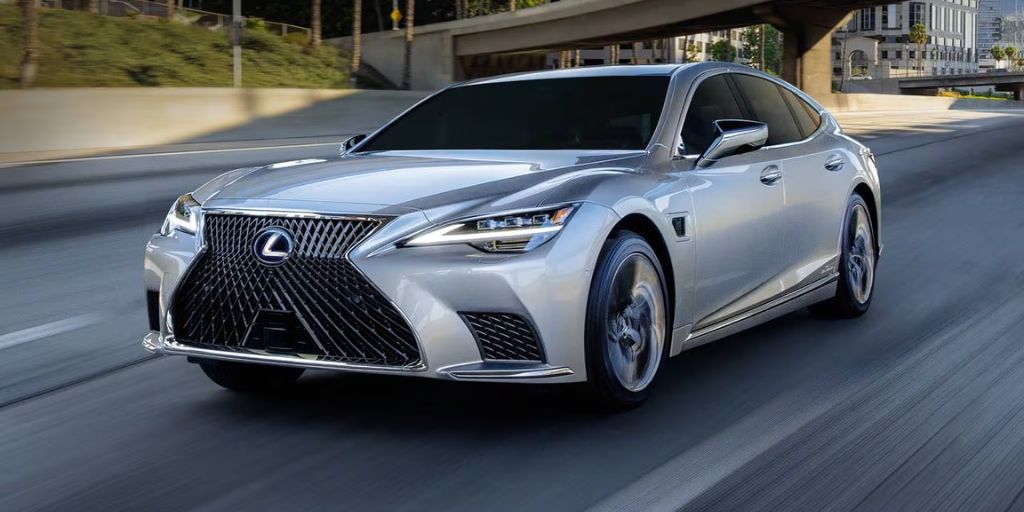
The fit and finish of the dashboard and center console remain tight and smooth, with no visible gaps or wear that are common in lesser-built interiors. Even after years of use, the interior retains a feeling of freshness, with surfaces that resist scuffs and stains.
Another strength of the LS is its timeless design. The cabin’s layout has always emphasized a refined, understated elegance that doesn’t rely on trends, which helps it avoid becoming dated. As a result, even older LS models look and feel relevant, making them an excellent choice for those looking for a car with long-lasting interior appeal.
2. Mercedes-Benz E-Class
The Mercedes-Benz E-Class has long been synonymous with luxury, and its interior quality is no exception. Known for its superb craftsmanship and attention to detail, the E-Class features an interior that can age gracefully over time, maintaining both its beauty and functionality for years.
Whether you’re looking at a newer model or an older one, the E-Class interior exudes sophistication, thanks to high-quality materials and a design that balances modernity with timeless elegance.
Mercedes uses a combination of supple leather, high-grade wood, and soft-touch plastics throughout the E-Class cabin, ensuring that surfaces feel as premium after several years of use as they did when new.
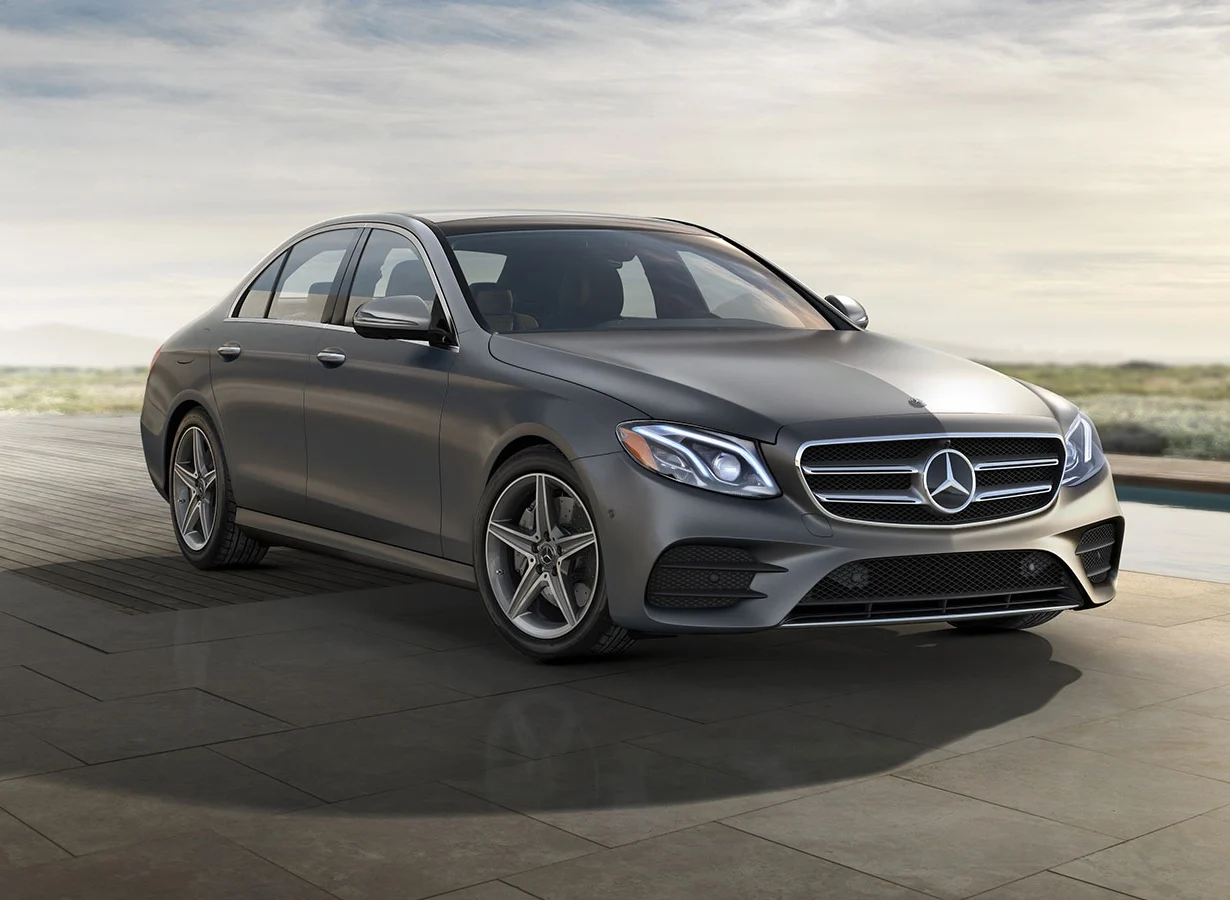
Leather seats, which are expertly stitched, resist cracking and fading, even in sunny climates. The wood trim remains elegant, with little risk of discoloration or wear. With proper maintenance, these materials look as luxurious as they did the day they left the showroom floor.
In addition to the physical materials, the design of the E-Class interior remains relevant year after year. The cabin layout prioritizes comfort, with well-placed controls and a layout that remains intuitive.
The interior technology, while constantly evolving, is seamlessly integrated, preventing the cabin from feeling outdated. As a result, even older models retain their appeal and are an excellent example of a vehicle that can provide a high-end experience long after purchase.
3. Audi A6
The Audi A6 is another exemplary model when it comes to interiors that stand the test of time.
Audi has long been recognized for its meticulous attention to detail, and the A6’s interior is a prime example of this philosophy. From the soft-touch materials to the precision fit and finish, the A6 is a car that looks and feels upscale, even as it ages.
One of the standout features of the Audi A6’s cabin is the high-quality leather upholstery, which is durable and resists cracking or fading. The leather seats are plush yet supportive, and they hold up well even in older models that have seen years of use.
The dashboard and center console are crafted from premium materials like brushed aluminum and wood trim, which don’t easily show signs of wear. Over time, these surfaces retain their rich appearance, with little to no visible degradation, even after years of exposure to sunlight and daily driving.
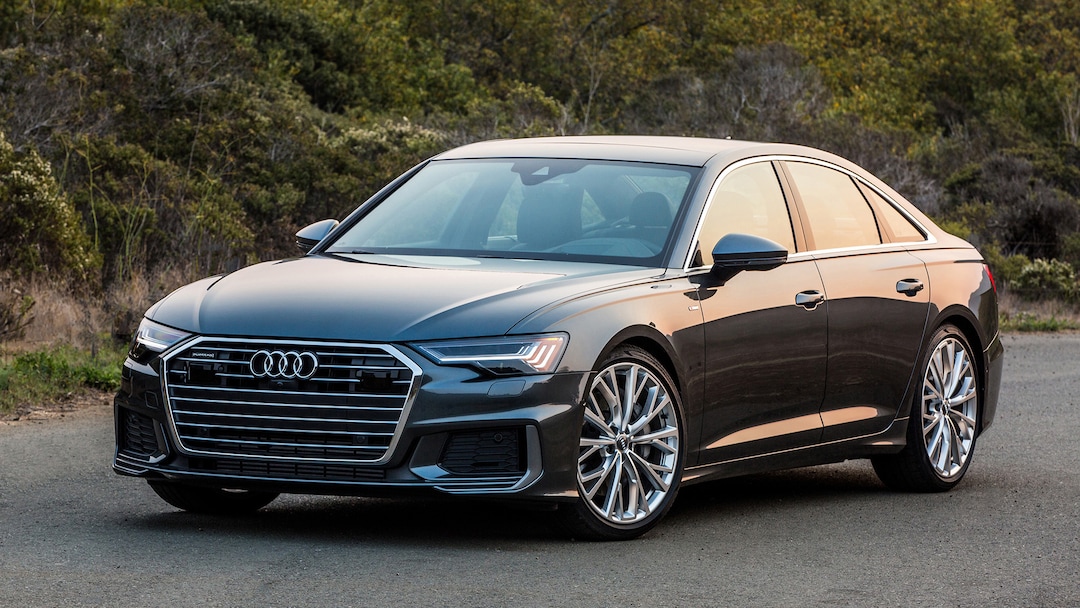
The overall design of the A6 interior is another factor that contributes to its longevity. Audi’s clean, minimalist approach ensures that the interior doesn’t feel dated, while also providing a cabin that’s both functional and aesthetically pleasing.
The user interface and technology have aged well, and the layout remains user-friendly, even in older models. Audi’s commitment to quality ensures that the A6’s cabin continues to impress long after the car has left the showroom.
4. Volvo XC90
Volvo’s reputation for safety and durability extends well beyond its exterior design, and the XC90 is a prime example of a vehicle with an interior that ages gracefully.
The Swedish automaker has always placed a strong emphasis on using high-quality materials in its cabin, and the XC90’s interior is no exception.
Its combination of high-grade leather, soft-touch plastics, and durable fabrics makes it a cabin that not only feels premium but also resists the typical wear and tear that other vehicles experience over time.
The XC90’s leather seats are particularly impressive, retaining their softness and color for years. Unlike many other vehicles, the leather doesn’t crack or fade easily, even in high-temperature climates.
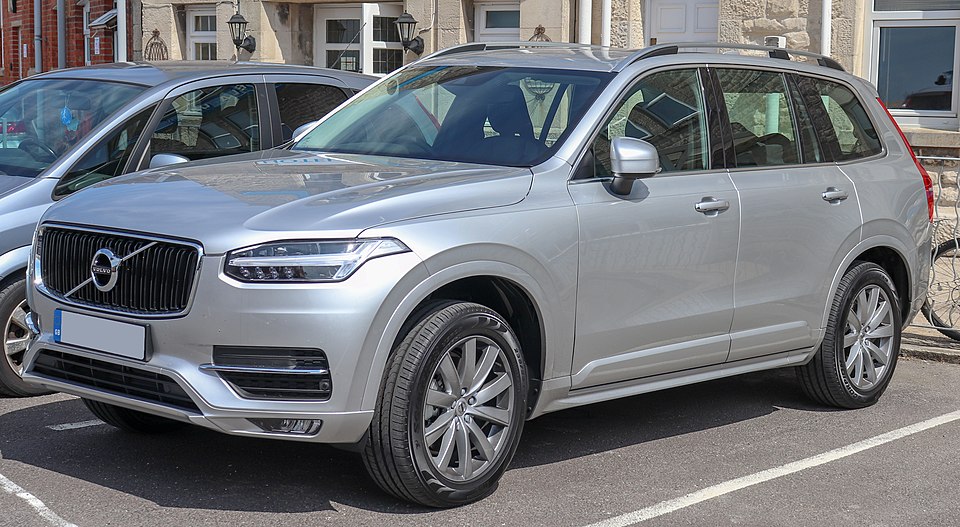
The wood and metal accents within the cabin are both stylish and resilient, offering a level of sophistication that only improves with age.
Additionally, the dashboard layout and controls are designed with simplicity and longevity in mind, avoiding unnecessary complexity that might otherwise age poorly.
What really sets the XC90 apart is its functional design, which remains relevant and modern, even in older models. The vehicle’s clean, uncluttered look ensures that the interior doesn’t feel outdated, and the spacious cabin continues to offer comfort and practicality, making it ideal for families.
With its blend of durability and elegance, the Volvo XC90 stands out as a vehicle whose interior ages incredibly well, proving that quality craftsmanship never goes out of style.
5. Toyota Land Cruiser
The Toyota Land Cruiser is one of the most enduring names in the automotive world, known for its rugged capability and timeless design. Its interior is no different, with a focus on durability and functionality that makes it age exceptionally well.
While the Land Cruiser is a vehicle designed for tough terrains, it also offers a refined and comfortable cabin that stands the test of time.
What sets the Land Cruiser apart is the quality of materials used inside the cabin. The leather upholstery, while not as plush as some other luxury SUVs, is incredibly resilient, resisting cracks and fading even after years of heavy use.
The durable fabrics and soft-touch plastics on the dashboard and door panels continue to look fresh long after the car has been in service, thanks to Toyota’s attention to detail in selecting high-quality, long-lasting materials.

The design of the Land Cruiser’s interior also helps it age well. With a straightforward and utilitarian layout, the cabin remains timeless, avoiding trends that could date the vehicle.
The ergonomics of the seats and controls are designed with comfort and ease of use in mind, ensuring that the driving experience remains pleasant for years.
Furthermore, the car’s exceptional build quality means that even older Land Cruisers continue to operate smoothly, with minimal issues.
For those looking for a vehicle that combines luxury, utility, and durability, the Toyota Land Cruiser proves that an interior can withstand years of hard use without losing its appeal.
5 Cars That Don’t Hold Up
While some vehicles are built to stand the test of time, others simply aren’t designed with long-lasting interiors in mind.
Whether due to cost-cutting measures, poor-quality materials, or just an over-reliance on style over substance, certain cars have interiors that begin to deteriorate far too quickly.
These cars, while appealing when new, often show signs of wear and aging much sooner than their owners would like, making them frustrating for long-term ownership.
The cars in this section are characterized by interiors that are prone to fading, cracking, and general deterioration over time.
From cheap, flimsy plastics that break down under sunlight to upholstery that cracks or fades after just a few years, these vehicles often require expensive repairs or replacement parts to keep their cabins looking presentable.
The overall design of these interiors tends to lean heavily on trends, making them feel outdated quickly, and they can’t always cope with the wear and tear that comes with daily driving or exposure to the elements.
Choosing a vehicle with an interior that doesn’t stand up well over time can result in a frustrating ownership experience. The cabin may lose its luster, impacting both the aesthetic appeal and comfort of the car.
In this section, we’ll dive into five cars whose interiors don’t hold up as well as others, shedding light on the common issues they face and why they tend to deteriorate more quickly than expected.
1. Chrysler 300
The Chrysler 300 is known for its bold styling and large, spacious interior, but unfortunately, its cabin quality doesn’t always match its exterior appeal.
Despite its luxury sedan aspirations, the 300’s interior materials have a tendency to show significant wear and tear far earlier than expected, making it a poor choice for those looking for long-term durability.
One of the most common issues with the Chrysler 300’s interior is the rapid deterioration of the plastic components.
The dashboard and door panels, which are covered in low-quality plastics, begin to crack, warp, or discolor over time, especially with exposure to sunlight. Even in relatively low-mileage models, these plastics often lose their luster, becoming brittle and unsightly.
The leather upholstery, though initially comfortable, has also been known to wear prematurely. The seats show signs of cracking, especially on the sides, and the stitching can come apart after just a few years.
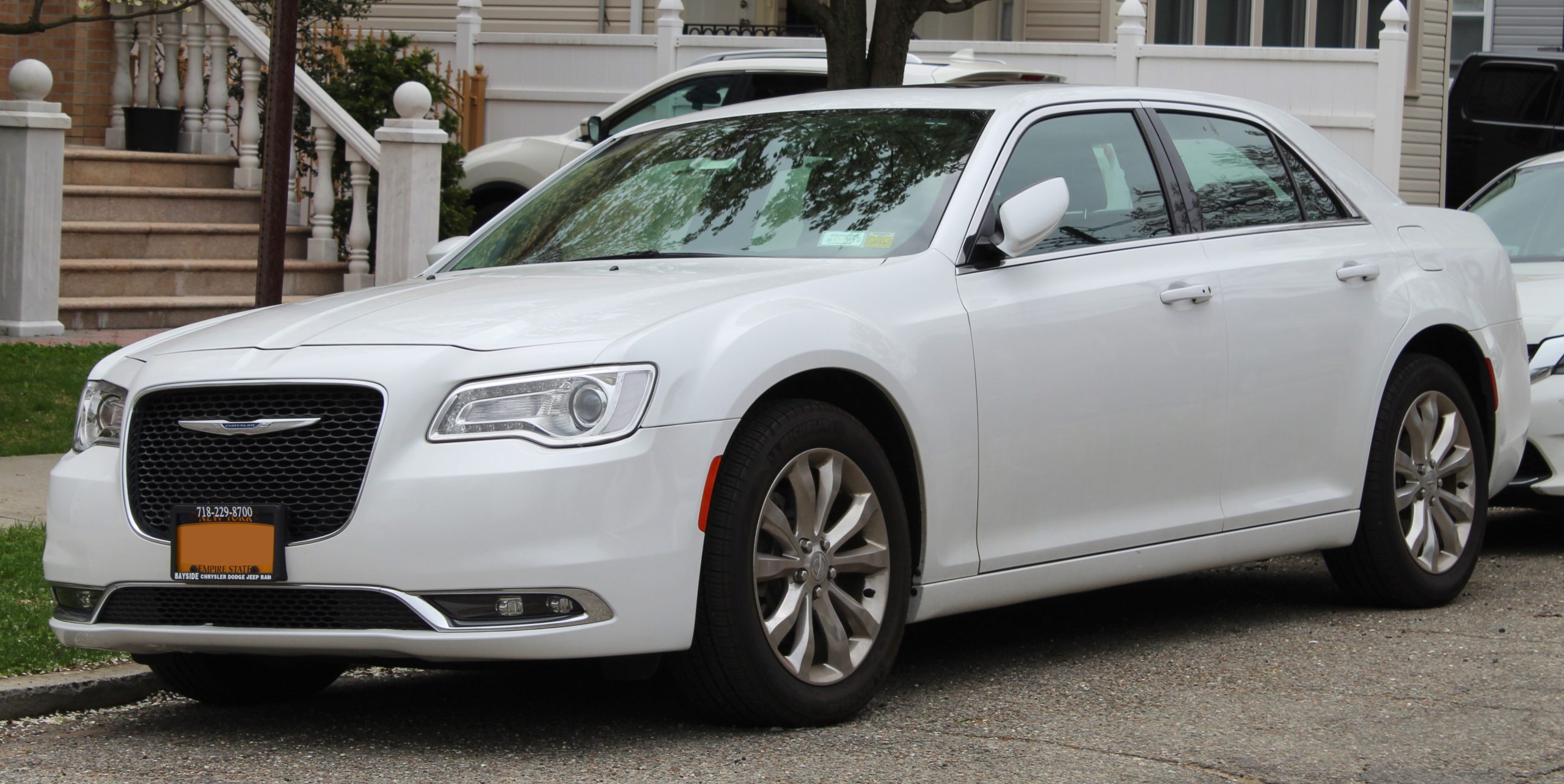
While the car offers a comfortable ride when new, the lack of durable materials and subpar craftsmanship means that the interior doesn’t stay as pristine over the long run.
The Chrysler 300’s interior design, which was once considered bold and stylish, also suffers from the issue of looking dated faster than its competitors.
The heavy reliance on gloss black and chrome trim can quickly feel gaudy, especially as other elements like the radio system or controls begin to age.
In conclusion, while the Chrysler 300 offers a lot of space and style, its interior simply doesn’t hold up as well as it should, leading to significant wear and an unappealing cabin over time.
2. BMW 3 Series
The BMW 3 Series is a beloved choice for driving enthusiasts, but its interior quality doesn’t always match its performance reputation, particularly as it ages. While the cabin may feel luxurious at first, it quickly shows signs of wear, especially in older models.
The leather seats, while soft and comfortable when new, can become stiff and prone to cracking over time. This issue is especially prevalent in the sportier trims, where aggressive bolstering can cause excessive wear on the seat edges.
One of the biggest drawbacks of the 3 Series interior is the dashboard, which, while sleek and modern at first glance, often suffers from premature wear.
The soft-touch plastics can develop cracks or discoloration, especially around high-contact areas such as the center console and door panels. This makes the interior feel far less premium as it ages, which is a disappointing result for a car that positions itself as a luxury brand.
Furthermore, the infotainment system and controls, although initially cutting-edge, quickly become outdated. BMW’s tech can feel clunky in comparison to newer models, and its interface may struggle with software updates, leading to frustration.
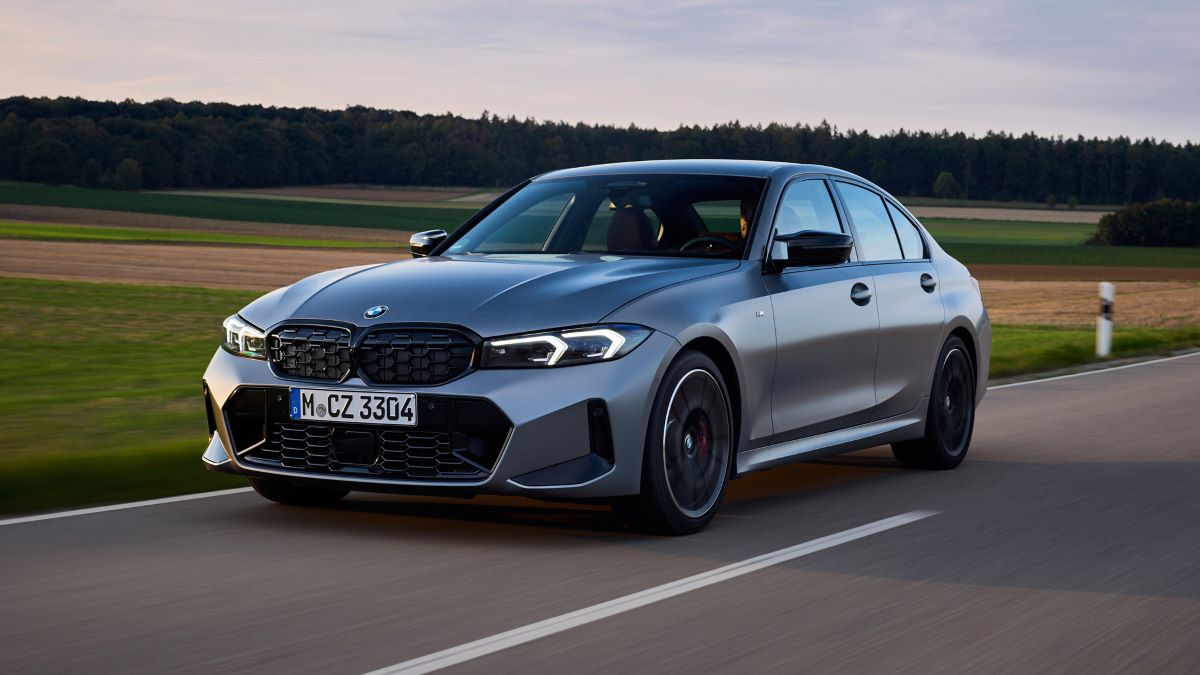
The overall cabin design, though elegant, is prone to feeling dated, especially in models from earlier production years. As a result, the BMW 3 Series, while a great driving car, often struggles to maintain the high-end appeal of its interior as it ages.
3. Nissan Altima
The Nissan Altima is one of the most popular midsize sedans, known for its comfort and practicality. However, the interior of the Altima doesn’t age well, especially when it comes to materials and design.
While the car boasts decent comfort and a user-friendly layout, the quality of materials used inside leaves much to be desired, making the interior feel cheap as it ages.
The plastic components, especially on the dashboard and center console, are prone to cracking and fading over time.
While the cabin may look fine when the car is new, these surfaces don’t stand up well against prolonged exposure to sunlight or wear from everyday use. This is a common complaint among Altima owners, especially in vehicles that are several years old.
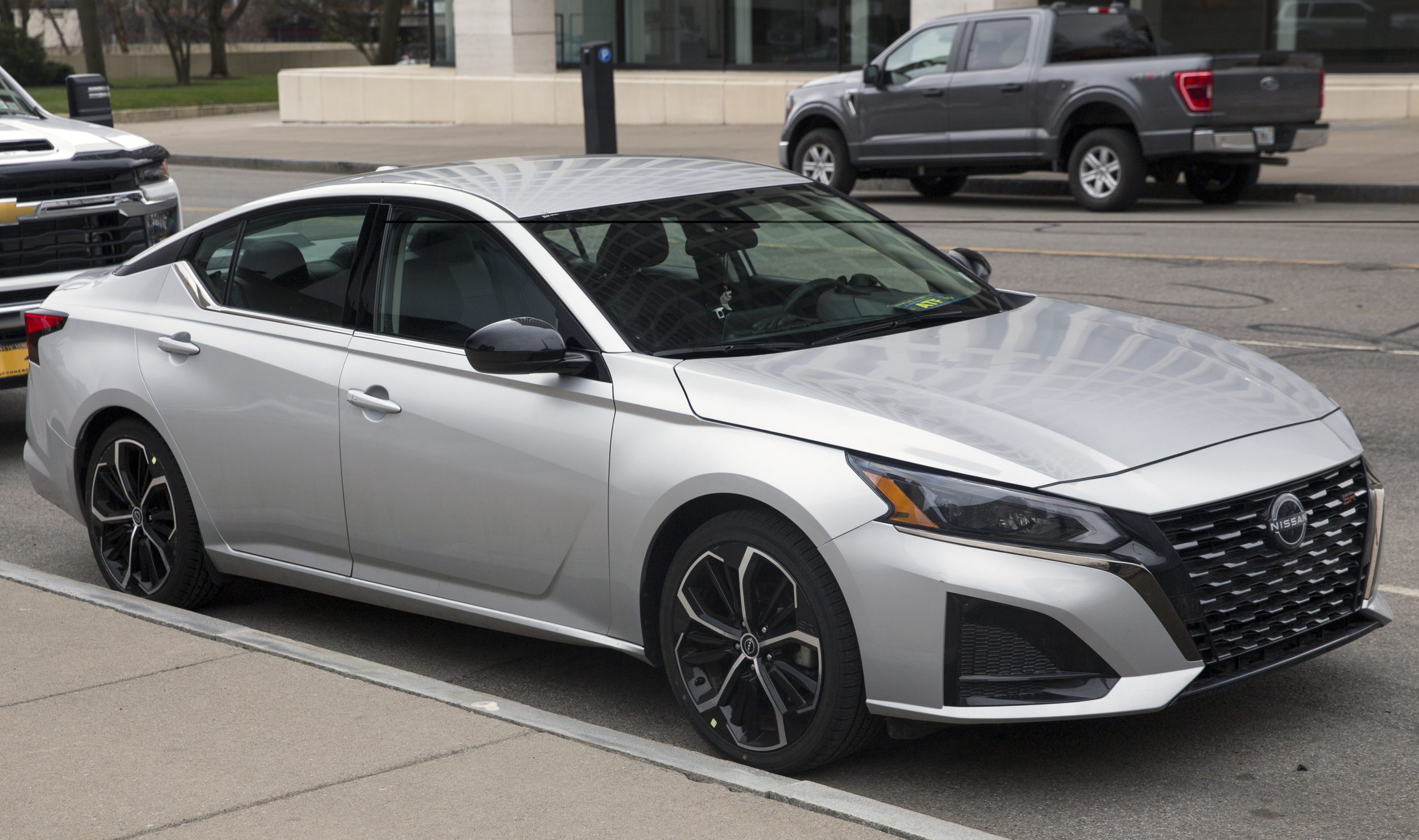
The cloth upholstery, while comfortable initially, tends to stain easily and doesn’t age well. After a few years, the fabric can look worn and feel rough to the touch, detracting from the car’s overall comfort and appeal.
In some cases, the seats develop permanent indentations from regular use, which can be especially noticeable on the driver’s side.
Additionally, the overall cabin design, which was once sleek and modern, can start to feel outdated as newer models introduce updated tech features and sleeker interiors.
The lack of premium materials means the Altima’s cabin doesn’t retain its original charm, making it feel much less sophisticated in the long term.
4. Ford Focus
The Ford Focus is a popular compact car known for its affordability and practicality, but when it comes to its interior, the car’s longevity leaves much to be desired. The cabin is generally functional but lacks the durability needed to keep it looking fresh for years.
One of the primary issues with the Focus interior is the overuse of low-grade plastics, especially on the dashboard and door panels. These plastics tend to crack or discolor relatively quickly, leaving the cabin looking worn-out after just a few years.
The cloth upholstery in many Focus models can be prone to staining, and over time, the fabric starts to feel rough and faded. Even with regular cleaning, the seats lose their plushness and look old before their time.
In some cases, the fabric can tear or wear thin in high-contact areas, especially on the sides of the seats where entry and exit frequently occur.
In addition to the wear on the materials, the overall design of the Ford Focus interior quickly starts to feel outdated. The tech features, such as the infotainment system, may become sluggish or less responsive as the car ages, making the driving experience less enjoyable.
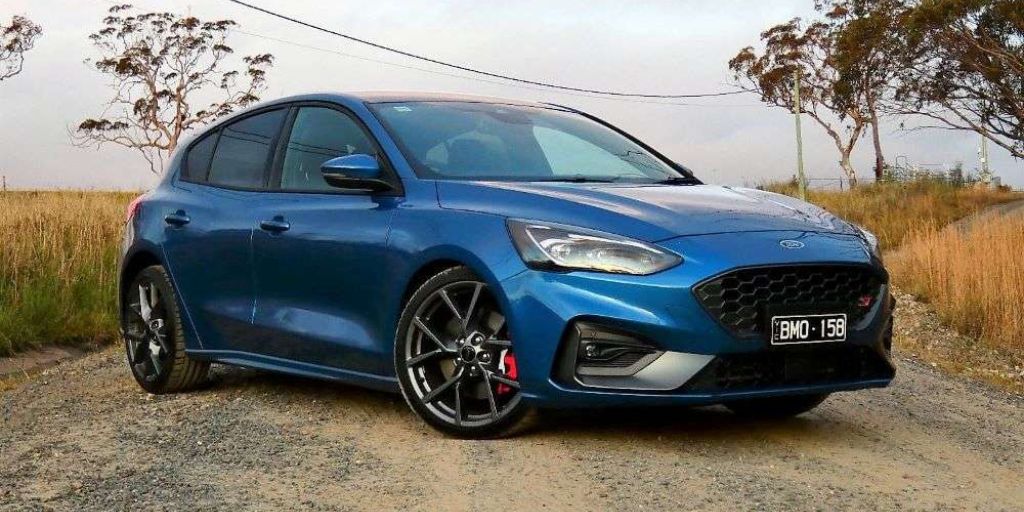
The dashboard layout, while functional, doesn’t age gracefully and can feel cluttered or out of place as newer vehicles adopt sleeker, more modern designs. Overall, the Ford Focus’s interior doesn’t hold up well to the rigors of time and use, making it less appealing as it ages.
5. Dodge Dart
The Dodge Dart, while a compact sedan with potential, has interior qualities that can quickly deteriorate, leaving owners frustrated. Despite a modern design when it was first introduced, the Dart’s interior materials don’t have the lasting power that many other cars in its class boast.
One of the most common issues with the Dart is the use of hard plastics throughout the cabin, which show signs of wear much sooner than expected. These plastics tend to scratch, discolor, and develop a brittle texture over time, which diminishes the overall appeal of the interior.
The upholstery, whether cloth or leather, doesn’t fare much better. The fabric upholstery in particular tends to stain easily, and after prolonged use, the material becomes rough and faded.
Leather seats, on the other hand, may crack and peel with exposure to sun and general wear, leading to an unappealing and uncomfortable seating experience as the vehicle ages.
The stitching in the seats and the steering wheel can also come undone after several years, leading to unsightly damage that detracts from the vehicle’s overall look.
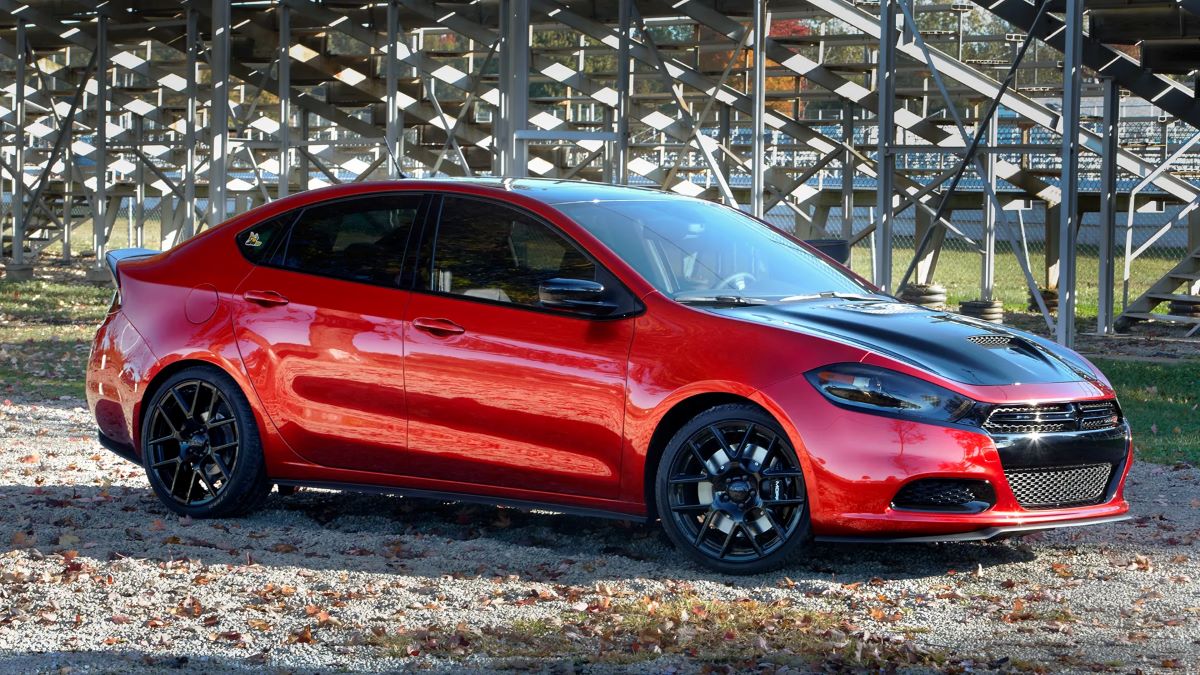
Additionally, the dashboard and technology interface, though modern when the Dart was new, quickly start to feel outdated. The infotainment system can become sluggish, and the overall design lacks the polish of its competitors, making it feel much older than it really is.
As a result, the Dodge Dart doesn’t hold up well over time, with its interior deteriorating faster than anticipated.
When it comes to selecting a vehicle, the longevity of the interior is often overlooked, yet it can significantly impact the overall ownership experience.
The cars with interiors that age well—such as the Lexus LS, Mercedes-Benz E-Class, Audi A6, Volvo XC90, and Toyota Land Cruiser—are prime examples of vehicles that retain their appeal long after they leave the showroom.
These vehicles excel in using high-quality materials that resist wear and tear, such as premium leathers, durable fabrics, and soft-touch plastics that don’t crack or discolor over time.
Additionally, their timeless interior designs avoid the pitfalls of trends, helping the cabin feel fresh and modern, even as the years go by.
Whether it’s the luxurious feel of a Lexus LS or the practical elegance of a Toyota Land Cruiser, these vehicles continue to provide comfort and refinement, making them excellent choices for long-term ownership.
On the other hand, there are vehicles that simply don’t hold up as well over time. The Chrysler 300, BMW 3 Series, Nissan Altima, Ford Focus, and Dodge Dart are examples of cars where the interior degrades more quickly than expected.
These cars often rely on lower-quality materials—such as brittle plastics and fabric upholstery that stains easily—that show signs of deterioration well before their time.
In addition, the design and technology features in these interiors often feel outdated as they age, which can be a major disappointment for owners.
While these vehicles may look appealing when new, they tend to lose their luster much faster, making them less ideal for those seeking a long-lasting, comfortable driving experience.
Ultimately, when considering a car, it’s important to evaluate not just how it looks at the time of purchase, but how it will endure over time.
The vehicles that maintain their interior quality are the ones that offer long-term satisfaction, while those that don’t hold up will leave you constantly battling with wear and deterioration.
Also Read: 5 Cars That Handle Wet Roads Well and 5 That Slide Easily

